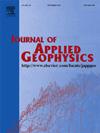通过挖掘多尺度局部和全局信息抑制地震随机噪声
IF 2.2
3区 地球科学
Q2 GEOSCIENCES, MULTIDISCIPLINARY
引用次数: 0
摘要
抑制随机噪声对于揭示真实的地下结构至关重要。卷积神经网络(CNN)是主要的地震数据去噪方法,擅长提取局部特征,但难以捕捉全局表征。Unet 可提取并重复使用多尺度特征,有助于精确检测细节和语义信息;但由于基于卷积操作,它难以捕捉全局信息。为了捕捉全局表征,研究人员通常会在高级视觉任务中使用变形器,这是因为变形器具有自我注意机制。本文介绍了一种基于混合门控 Unet(HGUnet)的多尺度局部和全局信息挖掘方法,该方法整合了变形器、CNN 和 Unet 架构,以增强地震随机噪声抑制任务的特征表示能力。HGUnet 由嵌入 U 型架构的混合门控块 (HGB) 组成,采用八度卷积并发结构和轻量级多头自注意机制,可同时高效提取多尺度局部和全局特征。此外,在 HGB 的末端,为了精确利用信息并降低计算成本,还设计了一个门控前馈网络,以保留有价值的信息并修剪冗余,从而实现特征融合。合成和现场实验结果表明,与传统方法和 CNN 方法相比,HGUnet 提高了去噪质量,而且没有增加大量计算成本。本文章由计算机程序翻译,如有差异,请以英文原文为准。
Seismic random noise suppression via mining multi-scale local and global information
Suppressing random noise is critical for revealing real subsurface structures. Convolutional neural networks (CNNs), the leading seismic data denoising methods, excel at extracting local features but struggle to capture global representations. Unet can extract and reuse multi-scale features, aiding in the precise detection of details and semantic information; however, being based on convolutional operations, it struggles to capture global information. To capture global representations, researchers normally employ Transformers in high-level visual tasks, owing to their self-attention mechanisms. This paper introduces a method for mining multi-scale local and global information based on hybrid-gated Unet (HGUnet), which integrates Transformer, CNN, and Unet architectures to enhance the feature representation capability for seismic random noise suppression tasks. HGUnet comprises hybrid-gated blocks (HGB) embedded within a U-shaped architecture, employing a concurrent structure of Octave convolution and lightweight multi-head self-attention mechanism to efficiently extract multi-scale local and global features simultaneously. Moreover, at the conclusion of the HGB, to precisely leverage information and reduce computing costs, a gated feedforward network is designed to retain valuable information and prune redundancies for feature fusion. Synthetic and field experimental results demonstrate that HGUnet improves denoising quality over traditional and CNN methods without adding significant computing costs.
求助全文
通过发布文献求助,成功后即可免费获取论文全文。
去求助
来源期刊

Journal of Applied Geophysics
地学-地球科学综合
CiteScore
3.60
自引率
10.00%
发文量
274
审稿时长
4 months
期刊介绍:
The Journal of Applied Geophysics with its key objective of responding to pertinent and timely needs, places particular emphasis on methodological developments and innovative applications of geophysical techniques for addressing environmental, engineering, and hydrological problems. Related topical research in exploration geophysics and in soil and rock physics is also covered by the Journal of Applied Geophysics.
 求助内容:
求助内容: 应助结果提醒方式:
应助结果提醒方式:


